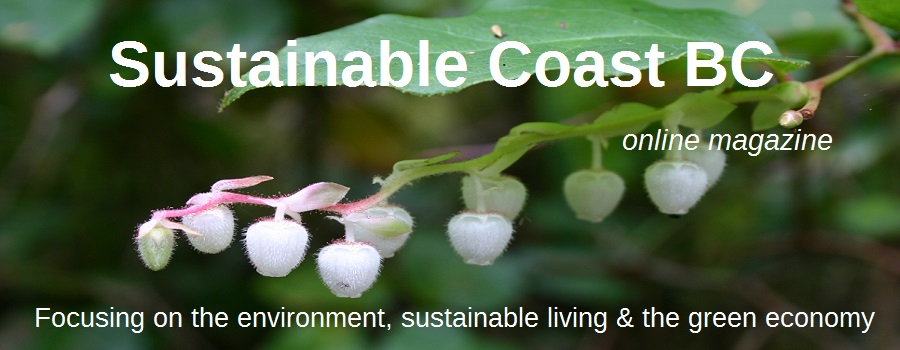News
Howe Sound Pulp and Paper is in the midst of an application process with the Ministry of Environment that could allow the company to add construction and demolition debris to the fuels it can burn to generate power.
Al Strang, manager of environmental and external relations for HSPP, has been lobbying local government, by making presentations to Gibsons and Sechelt councils, the Sunshine Coast Regional District, and their Solid Waste Advisory Committee.
HISTORY
In February 2009, the CBC presented a story titled, “B.C company turns recycled plastic into fuel” about a Vancouver company, Urban Wood Waste Recyclers, supplying construction debris with added plastic as an enhanced fuel for industrial plants such as the Lafarge cement plant in Richmond. HSSP was also named as a customer of Urban Wood Waste Recyclers.
In a February 2009 article in the Coast Reporter, Strang responded to concerns regarding burning recyclables reassuring the community that the plant was not burning plastics from milk jugs and other household recyclable plastics. He did admit the plant had been burning wood waste that contains less than 4% plastic for about 3 years from Urban Wood Waste Recyclers. Strang reported, “There is less than 4% plastic in one barge a week that accounts for 1/7 of the total wood strain (burned). The fuel is used to generate heat and electricity at HSSP. The mill can not get all the fuel they need to burn right here on the Coast. That is about 20% a year from Urban Wood Waste Recyclers."
In an article, March 1, 2007, in The Daily Commercial News, about Urban Wood Waste Recyclers, the process of making fuel from new construction- site wood and some screened wood from demoltion sites which is mixed with shredded “film” plastics such as building wraps is detailed. PEF biomass fuel has a higher heat value because of the plastic content. Sean Mabberly, CEO of Urban Wood Waste Recyclers speaks of supplying product to Howe Sound Pulp and Paper and is quoted explaining “Currently the mill’s hogfuel contains four per cent plastic — enough of a lift in BTU value to off-set moisture. In 2006, 68,000 tons or 52 barge loads were shipped to the pulp mill. In 2007, our target is to surpass that.”
TEST TRIALS AND PERMITS
Howe Sound Pulp and Paper commenced an initial trial burning 1,000 tonnes of coal for a week in February 2007. According to Ministry of the Environment staff, no permit amendment or authorization was required for the trial since the mill’s current permit does not disallow burning coal or any other fuel.
In May 2007 the mill commenced a nine- month trial burning unspecified volumes of coal. Environmental websites report that a memo obtained by environmental groups that HSPP concluded that high particulate matter and organics test results (dioxins, furans, PAH’s, HCB’s) were not due to burning coal but a mechanical failure.
A Variance Order Pursuant to the Environmental Management Act, October 2009 was issued authorizing the burning of C&D waste (construction and demolition waste) supplied by Urban Wood Waste Recyclers. The document states that the amount of C&D waste authorized is limited to 5,200 m3 per week.
THE RENEWABLE ENERGY QUESTION
Incineration of garbage is considered to be a renewable energy source in our province. June 1 2010, BC Hydro released the second phase of the Bioenergy Call To Power.The Crown corporation is requesting proposals from projects utilizing any form of clean or renewable biomass. That includes forest-based biomass and sawmill residue, and potentially dedicated energy crops, organically sourced material separated from municipal solid waste, and other fuels.
THE ZERO WASTE QUESTION
The Sunshine Coast Regional District says our region is committing to zero waste. The Zero Waste International Alliance definition states:
"Zero Waste means designing and managing products and processes to systematically avoid and eliminate the volume and toxicity of waste and materials, conserve and recover all resources, and not burn or bury them.
Implementing Zero Waste will eliminate all discharges to land, water or air that are a threat to planetary, human animal or plant health."
THE TOXIC QUESTION
Strang is reported having said that this type of fuel is widely used in Europe. Information from Europe reveals a growing number of concerns from citizens about toxins in the environment.
THE ECONOMIC MOTIVATION
By changing to burning wood industry can then claim to have reduced their carbon emissions. Wood costs less than imported coal and it is considered a carbon- neutral fuel. Companies can then claim huge reductions in green-house gas emissions. They can then turn those carbon credits into cash. If the pulp mill used coal it would pay carbon tax.
Some industries are even convincing municipal governments to pay them to take waste they are using as a fuel source. The SCRD's wood waste and green waste is used by HSPP for burning in their boiler. Unlike Urban Wood Waste Recyclers, the SCRD is not paid for their wood waste that is used as a fuel. The SCRD pays for the waste to be hauled to the Hillside/Port Mellon Industrial Area for chipping before it is sent to HSPP. SCRD reported 4,200 tonnes of construction and demolition waste was used as fuel in 2008.
There are tax breaks, grants and money to be made selling power from a “renewable fuel source”. All insuring that the demand for wood as an alternate fuel source for industrial use continues to escalate.
Further information may be found at:
http://www.bclocalnews.com/fraser_valley/abbynews/news/93785399.html
http://www.hspp.ca/environment/library/Enviro%20sum%202010.pdf
to see how little has changed: http://www.spacemodel.biz/ft/p2p/3a.html
